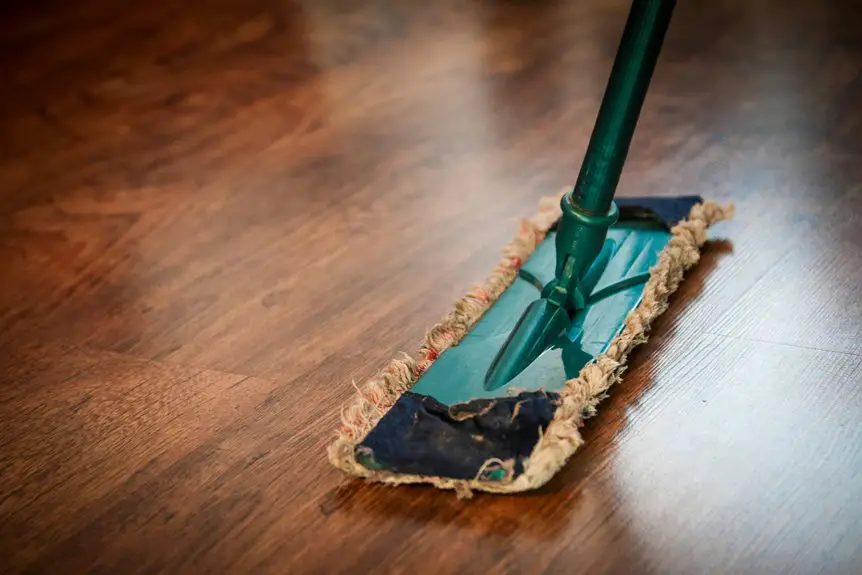To clean and maintain your webcam properly, start by gathering a microfiber cloth, distilled water, and isopropyl alcohol. Safely power down the webcam by unplugging it and closing all applications. Gently wipe the lens with the cloth, using circular motions for stubborn smudges. Keep your workspace decluttered and ensure good lighting for better video quality. Finally, remember to update your software and drivers regularly. There's more to know for keeping your device in top shape.
Table of Contents
Key Takeaways
- Use a microfiber cloth and a gentle lens cleaner to safely clean the webcam lens without scratching it.
- Power down the webcam by unplugging it and closing all applications that use it before cleaning.
- Maintain a clutter-free workspace and ensure proper lighting to enhance video quality.
- Regularly update webcam software and drivers to ensure optimal performance and security.
- Dust the area around the webcam frequently to prevent buildup that can affect image clarity.
Gather the Necessary Cleaning Supplies
Before you dive into cleaning your webcam, you need to gather the right supplies.
Start with a microfiber cloth; it won't scratch the lens and effectively removes dust and fingerprints. Next, grab some distilled water and isopropyl alcohol—these won't leave streaks or residue.
You might also want to have some cotton swabs on hand for those hard-to-reach areas. Avoid using paper towels or regular cloths, as they can scratch surfaces.
If your webcam has a protective cover, consider using a gentle lens cleaner specifically designed for electronics.
Lastly, make sure you have a small container for mixing your cleaning solution if you're making one.
With these supplies ready, you'll be set for a thorough cleaning session!
Safely Power Down Your Webcam
To safely power down your webcam, start by unplugging it from your computer or removing it from its mount if it's an external model. This prevents any accidental activation and ensures your privacy.
Follow these simple steps:
- Close All Applications: Ensure any software using the webcam is closed to avoid conflicts.
- Check Power Indicators: Look for any lights indicating the webcam is still on, and make sure they're off.
- Store Properly: If you're using an external webcam, keep it in a safe place, away from dust and damage.
- Reboot Your Computer: Sometimes, rebooting helps refresh your system settings, ensuring the webcam is fully powered down.
Taking these steps will help maintain your webcam's longevity and performance.
Clean the Lens With Care
Cleaning the lens of your webcam is essential for ensuring clear and sharp video quality.
Start by gently wiping the lens with a microfiber cloth. Avoid using paper towels or rough materials, as they can scratch the surface.
If there are stubborn smudges or fingerprints, slightly dampen the cloth with distilled water or a lens cleaner specifically designed for electronics.
Never apply liquid directly to the lens, as this can seep into the camera and cause damage.
Use circular motions to clean the lens, ensuring you cover the entire surface without applying too much pressure.
Afterward, let the lens air dry completely before turning the webcam back on.
Regular cleaning will keep your video quality at its best.
Maintain the Webcam's Surroundings
While you might focus on the lens, maintaining your webcam's surroundings is equally important for optimal performance. A cluttered or distracting background can negatively impact your video quality and overall experience.
Here are a few tips to keep in mind:
- Declutter: Remove unnecessary items from your workspace to create a clean backdrop.
- Lighting: Ensure adequate lighting by positioning your webcam near a natural light source or using soft artificial lights.
- Positioning: Set your webcam at eye level to enhance framing and reduce awkward angles.
- Dusting: Regularly dust the area around your webcam to prevent particles from entering the camera's vents, which can affect performance.
Regularly Update Software and Drivers
Keeping your webcam's software and drivers up to date ensures optimal performance and security. Regular updates can fix bugs, enhance features, and safeguard against vulnerabilities. To stay updated, check your webcam manufacturer's website or enable automatic updates in your settings.
Here's a quick guide to help you remember your update schedule:
| Action | Frequency |
|---|---|
| Check for updates | Monthly |
| Update drivers | Every 3-6 months |
| Review security patches | As released |
| Uninstall old software | When new version is installed |
Frequently Asked Questions
How Often Should I Clean My Webcam?
You should clean your webcam regularly, ideally every few weeks or whenever you notice dirt or smudges. Keeping it clean ensures clear visuals during calls, enhancing your experience and maintaining professionalism in online interactions.
Can I Use a Microfiber Cloth on Any Webcam?
Yes, you can use a microfiber cloth on any webcam. It's gentle yet effective, helping you avoid scratches while removing dust and smudges. Just make sure the cloth is clean before you start.
Is There a Specific Cleaning Solution for Webcams?
You don't need a specific cleaning solution for webcams. A gentle mixture of water and isopropyl alcohol works well. Just avoid abrasive cleaners, as they can damage the lens or casing. Always test on a small area first.
What if My Webcam Is Built Into a Laptop?
If your webcam's built into your laptop, you can still clean it easily. Just use a microfiber cloth and a gentle screen cleaner. Avoid getting moisture inside the laptop, and always turn off the device first.
How Do I Know if My Webcam Needs Maintenance?
You'll know your webcam needs maintenance if you notice blurry images, inconsistent video quality, or if it's not functioning at all. Regular checks can help you catch any issues early, ensuring smooth video calls.




